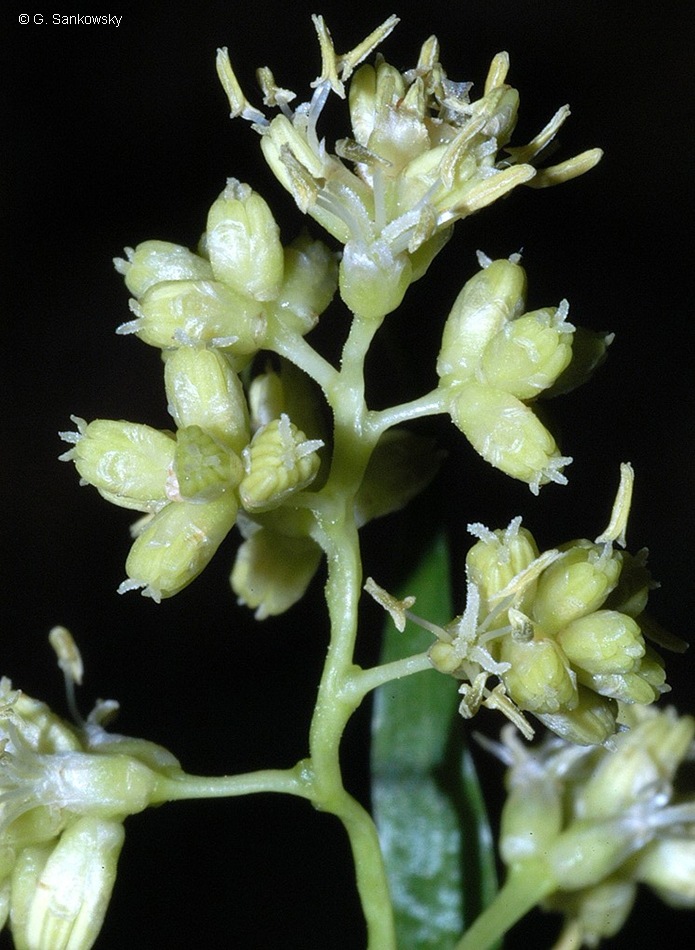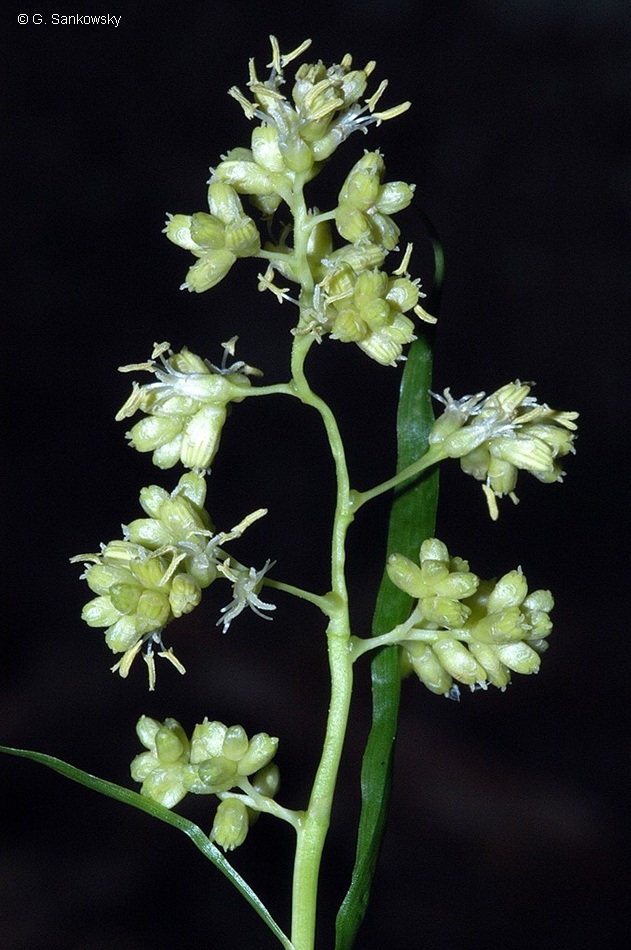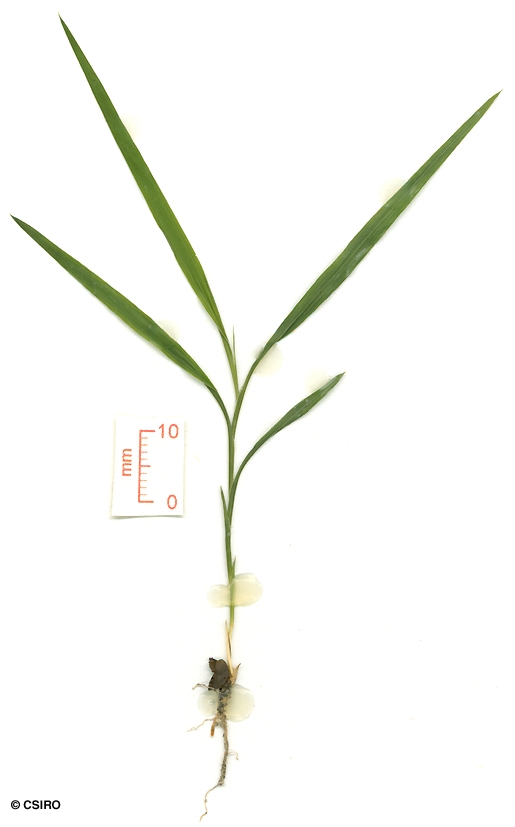Australian Tropical Rainforest Plants - Online edition
Flagellaria indica L.








Linnaeus, C. von (1753) Species Plantarum 2: 333. Type: Habitat in Java, Malabaria, Zeylona.
Supplejack; Vine, Whip; Whip Vine; Flagellaria
A slender vine not exceeding a stem diameter of 2 cm.
Flowers about 2.5 mm diam., sessile. Tepals similar, arranged in two whorls, the inner whorl slightly larger. Outer tepals about 1 mm long. Inner tepals abut 1.2 mm long. Stamens 6. Anthers about 2.2 mm long, base sagittate, filaments about 4.5 mm long at anthesis but only about 1 mm long before anthesis. Stigmatic branches about 1 mm long, papillate. Ovules usually 1 per locule.
About 3 to 5 cataphylls produced before the first true leaf. Cataphylls appressed to the stem, the first cataphyll short and white, later cataphylls longer and green. First true leaf blade much shorter than the second leaf blade. Leaf blades about 25-50 x 4-6 mm, narrow, linear to elliptic, apex drawn out into a long tip, base not narrowed into a petiole but +/- sessile and attached to a sheath around the stem. Venation longitudinal and parallel. At the tenth leaf stage: plants usually multistemmed with 2-4 main stems. Leaf blades linear, about 70-80 x 5-7 mm. Base of the leaf blade clasping the stem. Venation longitudinal, with 2-3 main veins on each side of the midrib, midrib flush with the upper surface or slightly raised towards the base. Seed germination time 299 to 391 days.
Occurs in WA, NT, CYP, NEQ, CEQ and southwards as far as coastal central New South Wales. Altitudinal range in northern Australia from near sea level to 1100 m. Grows in monsoon forest, gallery forest, lowland and upland forest. Also occurs in Asia, Malesia and the Pacific islands.
Young shoots of this species were suspected of poisoning stock but the evidence is not conclusive. Everist (1974).
Fruit eaten by Fruit Pigeons. Cooper & Cooper (1994).
Food plant for the larval stages of the Common Tit and Large Darter Butterflies. Common & Waterhouse (1981).
This species may have medicinal properties and it may also be poisonous.
Leaf and stem material of this species was active against some tumors. Collins et al. (1990).
Although apparently not used medicinally in Australia, the plant has been used in other countries as a hair wash; it has been shown to yield prussic acid which is thought to give a basis for this use. In some parts of Papua the plant has been used as a contraceptive, and is thought to cause sterility in women. Cribb (1981).





